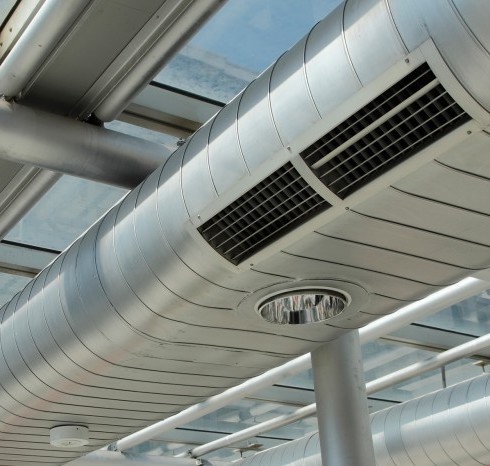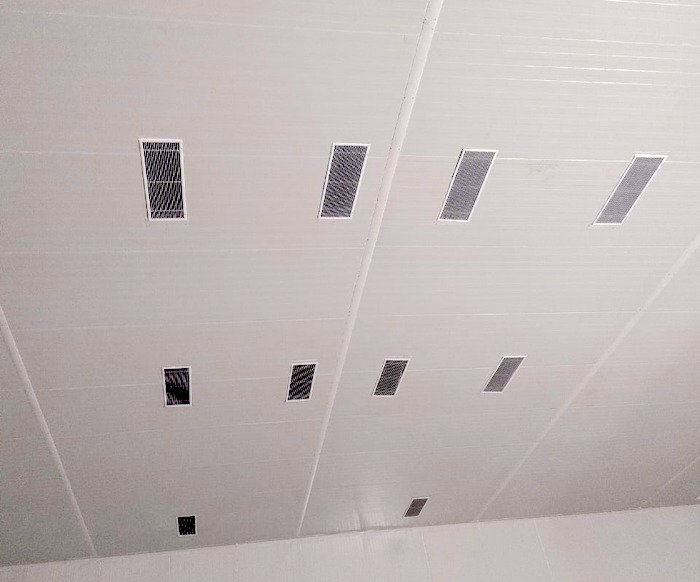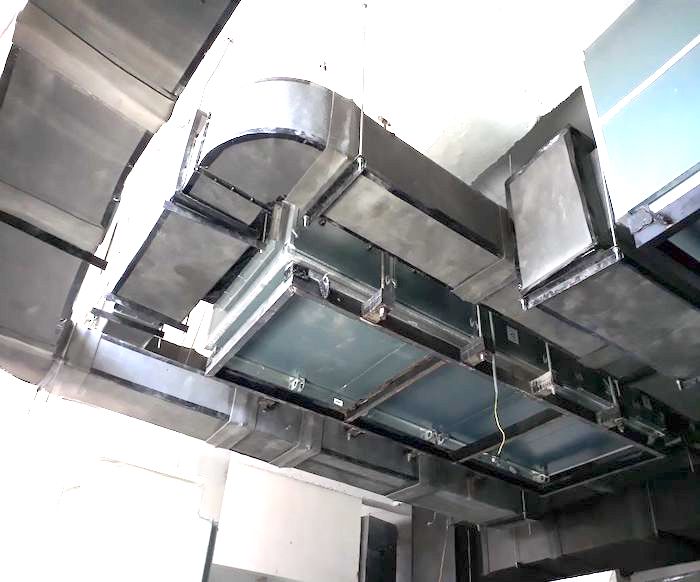Comfonomics Design Custom Solutions
We Design Custom Solutions for specific needs of your application for removal of Solid , Gases pollutants , and air borne disease causing living organisms.
Different industries require ail filtration and purification to suit their specific needs and we provide the combination of solid, gases filtration and sterilisation as required.

Solid Phase Filtration
Air suspended solid particles are detrimental to both human life and industrial machinery. It also interferes with the quality of the product or process in manufacturing. Thus it is critical to provide air cleaned of all such solid pollutants in air like dust, dirt, smoke, mist, fumes, pollens, etc
To provide the requisite filtration capacity, study of air changes per hour, source and generation of pollutant is done and diagnosed and combination of Fine, HEPA, ULPA filters are selected based of MERV/ASHRAE or EU (EN1822-1:2009) Classification
European Standards for HEPA and ULPA
S.No | Classification | Filter type | Percentage Efficiency at MPPS |
1 | E10 | HEPA | ≥85 |
2 | E11 | HEPA | ≥95 |
3 | E12 | HEPA | ≥99.5 |
4 | H13 | HEPA | ≥99.95 |
5 | H14 | HEPA | ≥99.995 |
6 | U15 | ULPA | ≥99.9995 |
7 | U16 | ULPA | ≥99.99995 |
8 | U17 | ULPA | ≥99.999995 |
MERV Ratings
S.No | MERV Rating | Efficiency for smaller Particles | Efficiency for Larger Particles | Particulates best used for | Filter type |
1 | 1-4 | <20% | 65-80% | Pollen, Dust, sanding dust, bigger than 10 microns | Residential A/C units, throwaway filters |
2 | 5-8 | 20-30% | 80-95% | mold spores, cement dust | Better Residential filters, commercial building filters, pleated filters for industrial settings |
3 | 9-12 | 40-75% | 90-95% | milled flour, welding fumes | better commercial building filters, hospital laboratories |
4 | 13-16 | 89-95% | >98% | Bacteria, Smoke | ASHRAE Filters, Hospital inpatient care, smokers laungers, general surgery areas |
5 | 17-19 | – | 99.97% | Combustion smoke, pharmaceutical manufacturing, viruses or radioactive material. | HEPA filters |
6 | 20 | – | 100.00% | Clean room | ULPA filters |
With growing focus on human health, manufacturing process and end product quality, Solid phase filtration now finds use in almost all commercial and industrial activity
Some prevalent Industrial application for solid phase filtration are
- Blasting
- Chemical Production
- Food Processing
- Powder Coating
- Mining
Gas Phase Filtration
Unwanted gases in commercial and industrial facilities act as contaminants which deteriorates human health and sensitive equipments. Gases like sulfur oxides, hydrocarbons, formaldehyde, organic acids, hydrogen sulfide, nitric oxide, VOC’s, etc lead to corrosive environment, bad odour, harmful breathing space.
Major Industries which require Gas Phase filtration
- Data Centres / Server Rooms
- Electronic Industries
- Food Processing / Cold Storage
- Chemical Production
- Waste Management Industries
Data centres, Server Rooms, Electronic Industries are at very high risk as the electronic parts are highly susceptible to the presence of corrosive gases in the environment and the same needs to be managed to increase the reliability and durability of Electronic Parts of machineries
Food Processing and Cold Storage industry generate organic gaseous compounds which can interfere with the food storage or processing leading to bad food quality or early ripening. Hence, removal of such gases from the environment is imperative to prevent the same.
Waste Management and Chemical production generates mixture of gases which are harmful to workers and also corrode the machines and affect their functioning.
For specific applications study of gases present in the environment is done , their source and generation identified and interaction of various gases simulated. Depending on the findings chemical filter media comprising granular media in thin or deep bed form or honeycomb media in cartridge form taken. Selection of activated alumina , activated carbon , potassium permanganate (KMnO4), phosphoric acid (H3PO4) and potassium hydroxide (KOH) as filtration compound is done as per the presence of corrosive gases in the environment
Gas phase filter media selections are based on ANSI/ISA S71.04 Classification
Class | Severity Level | Cu/Ag Reactivity Rate/Month | Comments |
G1 | Mild | <300 A°=Cu <200 A°=Ag | An environment sufficiently well-controlled such that corrosion is not a factor in determining equipment reliability. |
G2 | Moderate | <1000 A. ° | An environment in which the effects of corrosion are measurable and corrosion may be a factor in determining equipment reliability |
G3 | Harsh | <2000 A. ° | An environment in which only specially designed and packaged equipment would be expected to survive. Specifications for equipment in this class are a matter of negotiation between user and supplier. |
GX | Severe | >2000 A. ° | An environment in which there is a high probability that corrosive attack will occur. These harsh levels should prompt further evaluation resulting in environmental controls or specially designed and packaged equipment. |
a series of guidelines and standards issued by IUVA to foster the development of effective and reliable air treatment systems intended to control or improve the aerobiological quality of indoor environments via the reduction of airborne microbial contamination.
Air disinfection systems are any filtering and disinfection systems used to treat indoor air and reduce or aid in reducing indoor airborne levels of microbes, especially viruses, bacteria, fungi, spores
Air Sterilisation
AIR STERILISATION – AIR FREE FROM BACTERIA / FUNGI / OTHER DISEASE CAUSING ORGANISMS
Airborne microbial contamination affects the aerobiological quality of the indoor environment. This has direct implication on human health and production of food and pharmaceuticals.
Different bacteria , viruses, fungi present in air can contaminate the entire batch of food and pharmaceutical production and pose various types of hazards for humans
It is imperative to disinfect the air of such air borne microbes to provide a sterilised environment. Air Disinfection is widely used in
- Food Processing
- Pharmaceuticals Production
- Hospitals
- Cold Storage
- Commercial buildings
UVGI (Ultra Violet Germicidal Irradiation) Systems are designed considering the air volume to be sterilised, the required disinfection rates of airborne microbes, and other environmental and site conditions.
The UVGI system is designed to confirm to the IUVA (International Ultraviolet Association) Guidelines – IUVA-G01A-2005 and the UV lamps are selected as per IESNA (Illuminating Engineering Society of North America) Rating. Depending on the Dose of inactivation required URV Rating of 1-20 is selected.
UVGI Rating values and Typical Inactivation rates (IR)
URV | UV dose J/m² | Anthrax IR, % | Influenza IR, % | Smallpox IR, % | TB IR, % |
1 | 0.01 | 0 | 0 | 0 | 0 |
2 | 0.1 | 0 | 1 | 2 | 2 |
3 | 0.2 | 0 | 2 | 3 | 4 |
4 | 0.3 | 0 | 3 | 4 | 6 |
5 | 0.5 | 1 | 6 | 7 | 10 |
6 | 0.75 | 1 | 9 | 11 | 15 |
7 | 1 | 2 | 11 | 14 | 19 |
8 | 1.5 | 2 | 16 | 20 | 27 |
9 | 2.5 | 4 | 26 | 32 | 41 |
10 | 5 | 8 | 45 | 53 | 66 |
11 | 10 | 15 | 69 | 78 | 88 |
12 | 15 | 22 | 83 | 90 | 96 |
13 | 20 | 28 | 91 | 95 | 99 |
14 | 30 | 39 | 97 | 99 | 100 |
15 | 40 | 49 | 99 | 100 | 100 |
16 | 50 | 57 | 100 | 100 | 100 |
17 | 60 | 63 | 100 | 100 | 100 |
18 | 80 | 74 | 100 | 100 | 100 |
19 | 100 | 81 | 100 | 100 | 100 |
20 | 200 | 96 | 100 | 100 | 100 |
UV Rate Constant | k, m²/J | 0.0167 | 0.1187 | 0.1528 | 0.2132 |
Air Purification Works




